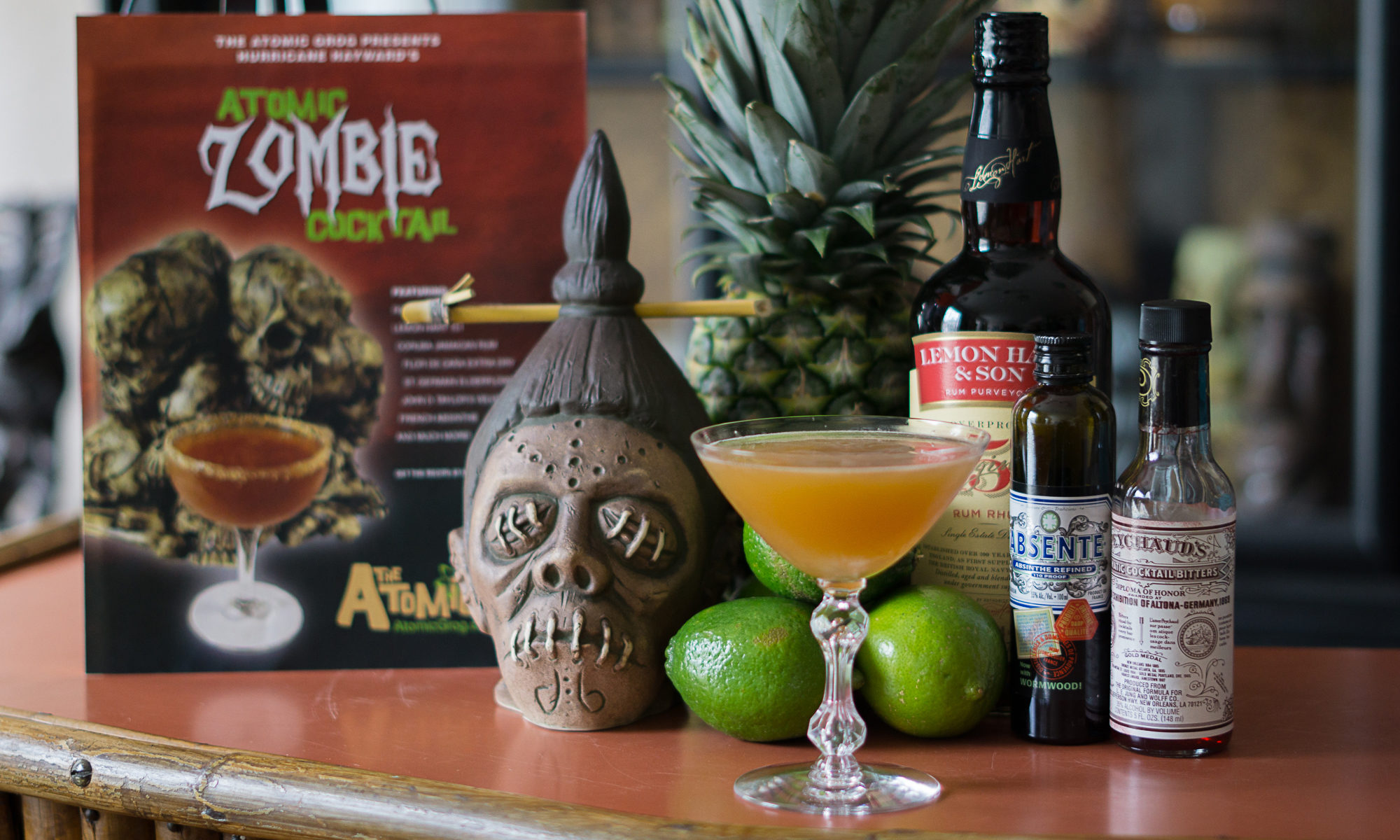Pop culture phenomenons are routinely shunned by historians and academics. This is especially true in the case of 20th century Tiki culture, which has been typically dismissed as being kitschy and unauthentic to the native civilizations that inspired it. Of course, this critique entirely misses the point of the artistic movement that peaked in the 1950s and ’60s but has been the midst of a continuing revival during the past several decades.

Luckily for fans of Polynesian Pop history and the current renaissance, we have Sven Kirsten. The contributions by this German-born, longtime Los Angeles film professional and self-proclaimed Tiki urban archaeologist are inestimable. His third hardcover book puts many pop culture historians to shame, exploring in rich and colorful detail the uniquely American phenomenon that permeated fashion, music, eating, drinking, and architecture for decades.
Tiki Pop: America Imagines Its Own Polynesian Paradise, published by Taschen (English and French). Available via Amazon and at retail outlets.
* Official Facebook page
Published in connection with an elaborate exhibit at a museum in Paris, Tiki Pop traces the development of Tiki as romantic vision and cultural appropriation. It takes readers on a journey from James Cook’s first expeditions in the Pacific, through Gauguin’s exotic paintings, to Hollywood’s big-screen fantasies, to the modern “temples” (bars, restaurants, hotels, apartments) built to celebrate Tiki as the god of recreation.
If you’re not sold yet, here are 10 good reasons why everyone with an interest in Polynesian Pop and mid-century culture needs to waste no time in picking up Kirsten’s latest hardcover opus:

1. Tiki Pop had one of the grandest debuts of any pop culture compendium in recent history, coinciding with a three-month museum show at the Musée du Quai Branly in Paris that continues through Sept. 28. The book is actually the “catalog” for the exhibition, which explains all the French text. The exhibit (“Tiki Pop – America Conjures Up Its South Seas Dream”), curated by Kirsten, follows the same timeline as the book with a chronological history from the first explorers through Gauguin to pre-Tiki Hawaiian music and bamboo bars to the rise and fall of Tiki culture. It features more than 400 artifacts from the 17th century to the 1960s and includes recognition of the current revival that Kirsten helped spark with his first book.
2. Kirsten is the godfather of the Tiki revival as the author of The Book of Tiki (2000) and Tiki Modern (2007). His third book, right on schedule seven years after the last, is a much more affordable entry point for newbies. His previous efforts, long out of print, can fetch upwards of $250 used. The new book is massive, weighing more than 6 pounds and measuring 9.8-by-12.8 inches, dwarfing the first two.
3. While Polynesian Pop is considered kitsch, Kirsten approaches the subject with an authoritative and historical perspective like nobody else. Art purists may scoff, but his books take what many consider a superficial topic and give it not only a basis in history, but also a social significance in modern society. It’s the perfect balance between academic research and pop culture. Kirsten seamlessly blends both, often with tongue firmly in cheek.

4. Kirsten’s background in film gives him a unique and informed perspective on the influence of Hollywood on Tiki culture. Ernest Gantt (aka Donn Beach), came to Hollywood in the 1930s from Hawaii with a boatload of authentic native objects that he loaned to the studios as decor for South Seas films. In 1934, he used them to decorate his new Beachcomber Café, later known as Don the Beachcomber. Most of the Tiki bars that followed were essentially movie sets brought to life.
5. Did you know that the idea for the famous Hollywood Walk of Fame was directly inspired by a menu for tropical cocktails? Impress your friends with this and other fascinating facts found in the book while you drink from a new Tiki Pop mug, available from Tiki Farm.
6. Like in his previous books, Kirsten argues that Tiki didn’t became a bona fide pop culture genre until after it spread from bars and restaurants to apartment buildings, bowling alleys, and motels in the mid-1950s. His depth of knowledge in this area is unparalleled, especially considering most of these locations have disappeared without a trace, except for ephemera like matchbooks and postcards.

7. Tiki Pop contains hundreds of previously unpublished images on its 384 pages, creating a feast for the eyes (more than 800 images in total). Its 36 chapters cover such topics as “Storytellers in the South Seas,” “Movie Clientele and Celebrity Culture,” and “The Hula Girl – Emissary of the Polynesian Paradise.”
8. The book explores the links between the ancient cultures of the South Pacific and the modern Tiki equivalents, pointing out the similarities and differences through photos and Kirsten’s keen eye. You’ll be able to show off this newfound knowledge of history when visiting your local Tiki bar.
9. As Kirsten’s research shows, the appropriation of images and symbols of South Seas culture was first popularized by modern artists such as Picasso, who found inspiration in primitive art from Africa and Oceania. These respected artists realized that their work didn’t need to be realistic or naturalistic. You’ll learn more than enough to silence any critic who decries these images as politically incorrect. Actually, it’s all about love and respect for the original artwork.
10. Tiki Pop is poised to inspire a new generation of Tiki enthusiasts, artists, designers and historians. Thanks to Kirsten’s expertise, this 20th century phenomenon likely will continue to thrive and reach a wider audience well into the 21st century.
Official sites
* Facebook: Tiki Pop | Sven Kirsten
* Taschen | Musée du Quai Branly | The Book of Tiki, Tiki Modern
* Tiki Pop thread on Tiki Central
More coverage on the Web
* BBC: Why Tiki became an American pop culture phenomenon (Video)
* Retro Renovation: Story on exhibit opening (with photos)
Tiki Pop by Sven Kirsten: 2014 Book of the Year
* Collectors Weekly: Unearthing the false idols of America’s South Seas fantasy
* Mucha Creative (featuring photos of the exhibit)
* We Heart: Why mid-century America couldn’t get enough of exotic Tiki culture
* Huffington Post: Why America was full-on obsessed with the tiki
* Wired: The bizarre rise and fall of the Tiki bar


